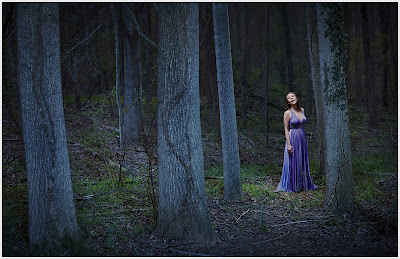Met dank aan Cameramagazine
Tekst en (product) fotografie:
Anno Huidekoper
Met medewerking van model Marouschka
De opsteekflitsers zoals we die kennen zijn eendelige flitsers; de voeding, batterijen of accu, en de flitsbuis zijn in één huis geplaatst. Meestal wordt zo’n flitser in de hotshoe van de camera geschoven maar er zijn ook situaties waarbij je de flitser in de hand houdt of op een statief plaatst. De Qflash is echter geen eendelige maar een tweedelige flitser en doet denken aan de bekende grijze Metz 402 diep uit de vorige eeuw. Bij tweedelige flitsers hebben de flitser en de voeding een eigen behuizing en zijn met een snoer aan elkaar verbonden. Het grote voordeel is dat de capaciteit van de voeding veel hoger is, volgens de gegevens van de fabrikant kan je met deze Quantum meer dan 1000 flitsopnamen bij volle capaciteit maken. Dat is veel meer dan het aantal flitsopnamen die je kan maken met een eendelige flitser die gebruik maakt van 4 penlite batterijen! Een tweedelige flitser heeft natuurlijk ook een nadeel, je loopt met een extra accubak om je middel, in dit geval met een gewicht van maar liefst 970 gram.
VERVANGBARE FLITSBUIS
De flitser bestaat uit een huis met daarop aan de achterkant een groot display om e.e.a. in te stellen. In de draaibare en neigbare kop zit een zelf te plaatsen flitsbuis. Gaat deze
kapot dan kan je die zelf vervangen. Een ander voordeel van deze open constructie is
dat de warmte van de flitsbuis beter afgevoerd kan worden. Sommige flitsers van andere merken zijn gevoelig voor oververhitting bij het afvuren van veel flitsen gedurende een lange periode. Zo schakelt de Nikon SB 900 zich uit bij dreigende oververhitting en Canon geeft in de gebruiksaanwijzing van de 580 EX II aan dat je na 20 flitsopnamen de flitser 10 minuten niet mag gebruiken om hem af te laten koelen. De Qflash kent dit probleem gewoon niet.
VERSCHILLENDE DIFFUSERS
Hoe kleiner de flitsbuis, des te harder het flitslicht is. Ook is er bij een kleine flitsbuis eerder kans
op een zogenaamde hotspot; een hel verlicht centrum, met daarom heen een steeds donker wordende omgeving. De flitsbuis van de Qflash is flink van formaat. En om het licht nog zachter te maken zit er op de flitskop een grote diffusers. Twee typen zijn leverbaar, een bolvormige en een platte. Een diffuser heeft naast het verzachten van het licht ook de taak om het licht te verspreiden zodat alles egaal verlicht wordt. Naast deze lichtverdelers kan je ook nog een softbox op de flitser zetten, deze is niet getest.
DE PRAKTIJK
In de studio is gebruik gemaakt van de Qflash in combinatie met twee extra flitsers om de achtergrond egaal wit te krijgen. Bij het portret is tevens één studioflitser achter het model gezet om tegenlicht te verkrijgen. Als camera dient een Canon 5D MKII met daarop een Canon 70-200/2.8 MK2.
Het licht blijkt heel zacht te zijn en de huid van het model hoeft veel minder nabewerkt te worden dan bij gebruik van een studioflitser.
Tekst en (product) fotografie:
Anno Huidekoper
Met medewerking van model Marouschka













